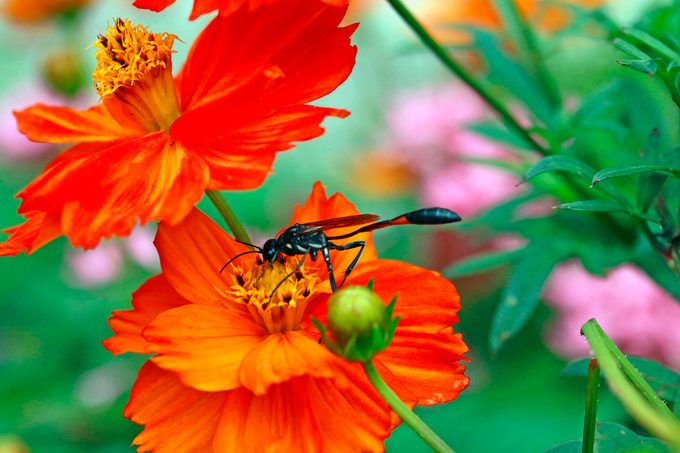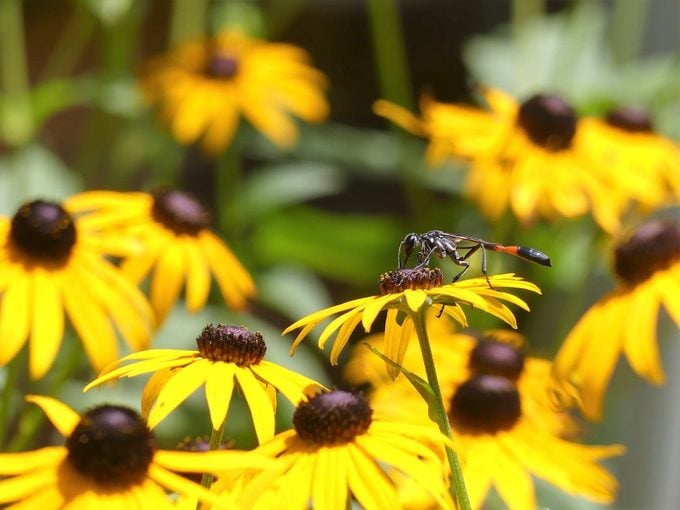Thread-Waisted Wasp: Harmful or Helpful Insects?
Updated: Aug. 14, 2023
Find out what a thread-waisted wasp looks like and if this insect will sting you when you're working in your yard and garden.
How to Identify a Thread-Waisted Wasp

What’s this insect on my flowers? asks Birds & Blooms reader Phyllis Puglia of Toms River, New Jersey.
Kenn and Kimberly Kaufman: This elegant little creature is a thread-waisted wasp. Adults visit flowers for nectar. Although they are capable of stinging, they are not aggressive toward humans. The adult female is a predator of caterpillars. After stinging a caterpillar, she’ll carry or drag it to a patch of dry, sandy soil and dig a tunnel to bury it. Then she’ll lay an egg on the caterpillar and cover the tunnel entrance. When the egg hatches, the wasp larva has all the food it needs to mature to the stage of pupating and then emerge in its adult form.
Backyard Tip: Social wasps build large nests and will aggressively defend them. There is one reproductive individual supported by hundreds of female “workers.” Solitary wasps like the thread-waisted wasp don’t typically try to protect their small nests.
Discover 6 key differences between bees and wasps.

“I’ve been newly obsessed with trying to get close-up photos of the variety of pollinators that have been visiting my backyard since I’ve increased the native plantings. The black-eyed Susans are always a summer stunner and make for terrific background. I love the way this thread-wasted wasp seems to really appreciate them as well! This photo was taken with my bridge camera, Lumix DMC-FZ300K,” says reader Christine McCluskey.
Next, learn how to get rid of wasp nests in birdhouses without pesticides.




















